Chicken Halang-Halang is a traditional Filipino dish that many people love. It comes from the Visayan region and has influences from Malay, Chinese, and Spanish cooking.
This dish is made with spicy flavors and coconut milk, making it a favorite comfort food. People in different places have their own way of making it taste just right for them.
It’s been around for a long time and is loved by many.
Historical Roots of Filipino Cuisine

Exploring the olden days of Filipino cooking shows a mix of different food ways from Malay, Chinese, and Spanish cultures. The Philippines was in a good spot for trade, so lots of different foods and cooking styles got mixed together.
The original Filipino people used methods like grilling and roasting, and brought ingredients like coconuts, fish, and root crops to the table. These are still big parts of Filipino food today.
The influence of Malay neighbors is seen in the use of spices and dishes like stews and curries.
The Chinese brought noodles, soy sauce, and steaming, and you can see their influence in spring rolls and noodles which are now Filipino favorites.
The Spanish were in charge for a long time and added their own flavors to the mix, like adobo and lechon.
They also brought over foods from the Americas like tomatoes and corn, making Filipino food even more diverse.
Emergence of Regional Filipino Dishes

When you look at the food in the Philippines, you’ll see that different places have their own special dishes that taste different because of the things they’ve there.
This didn’t just happen by accident. It’s because every place in the Philippines is different, with its own land and culture that made their food unique.
For example, Chicken Halang Halang comes from the Visayas. It shows the kind of flavors that people there like, with spicy chili and creamy coconut milk.
This dish is special because it shows how Filipinos used the things around them, like coconuts and chilies that grow near their homes.
Where you live also affects the food. Places near the sea like to eat Kinilaw or Sinigang na Isda, made with fresh fish.
But in the mountains, they might eat heartier food like Pinikpikan, which is made using traditional methods.
Special events and customs also made some dishes important. Lechon, for example, is a special dish that people eat during celebrations, especially in Cebu.
They cook and eat it together, making it a big part of their community.
These dishes aren’t just food; they tell stories about the history, land, and people of the Philippines.
They keep passing on these stories, making sure that each place’s food stays special in Filipino cooking.
Introduction of Chicken Halang-Halang
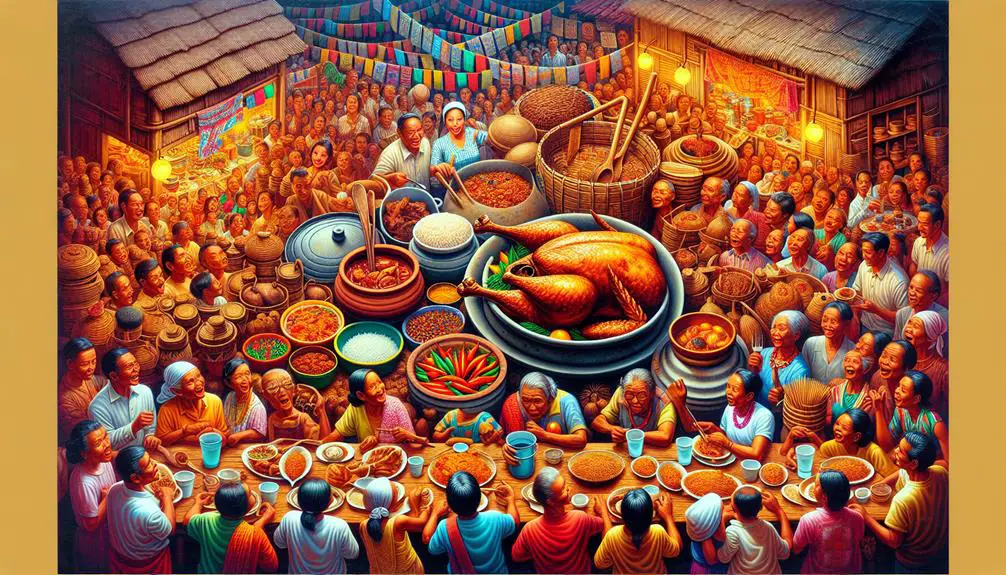
Chicken Halang-Halang is like a super spicy dish from the Visayas region in the Philippines. It’s not just made by one famous person, but lots of families and cooks have helped make it really tasty.
The recipe has been passed down from grandparents to parents and then to kids, and everyone adds their own special touch to it.
You can find this dish everywhere in the Visayas, like in markets, small restaurants, and homes where families eat together.
Even though you might think a famous chef made Chicken Halang-Halang, it’s actually regular people like moms, dads, and street cooks who’ve made it so good.
They’ve been cooking it for a long time without getting famous for it. They use local ingredients like native chicken and coconut to make it really delicious.
Their hard work and kindness have made this dish a big part of Visayan culture.
Key Ingredients and Spice Profiles
In Chicken Halang-Halang, the yummy flavor comes from using special native chicken, mixed with spicy chilies, nice-smelling lemongrass, and creamy coconut milk.
The chicken, which is best if it’s allowed to roam freely, is the main part of the dish. It’s cut into pieces and cooked with the bones to make the flavor even better.
You’ll need some special local spices and herbs to make this traditional recipe just right. First, add the special spices: black pepper and fresh chilies.
It can be as spicy as you like, but usually, it’s really spicy, just like its name ‘halang,’ which means spicy. The lemongrass gives a citrusy taste, and ginger adds a warm, zesty flavor.
To make it really good, you should also use local ingredients like green papaya, which adds a bit of sweetness and texture to the dish.
The coconut milk shouldn’t be too thin; it’s what makes the dish creamy and balances out the heat.
The steps are easy: cook the onions, garlic, ginger, and lemongrass first, then brown the chicken.
After that, pour in the coconut milk, add the chilies, and cook until the chicken is soft and the sauce thickens. The green papaya goes in at the end, just in time to soften but not fall apart.
Regional Variations
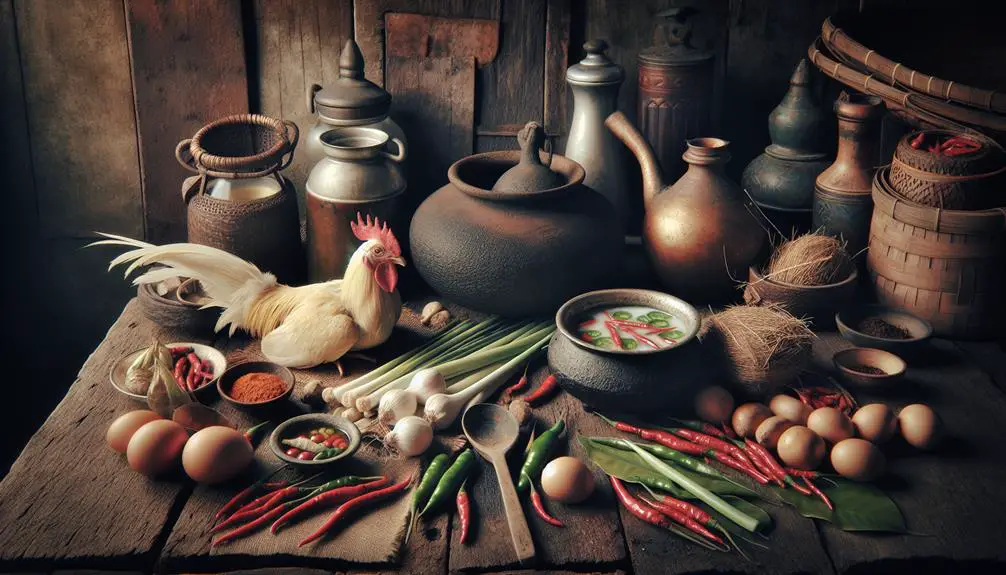
Chicken Halang-Halang is made in different ways in different places. Some places make it very spicy by adding more chili peppers, while others use special local herbs to give it a unique taste.
The spices used also make the dish taste different, like turmeric, lemongrass, and even coconut milk for a creamy texture.
The way it’s cooked is also important. Some places use old-fashioned ways like cooking in a clay pot over a fire, which gives it a smoky flavor.
They also cook it slowly to make sure the flavors go deep into the chicken, making it super tasty.
Chicken Halang-Halang isn’t just a quick meal, but a special dish made with love to enjoy slowly.
Cultural Significance
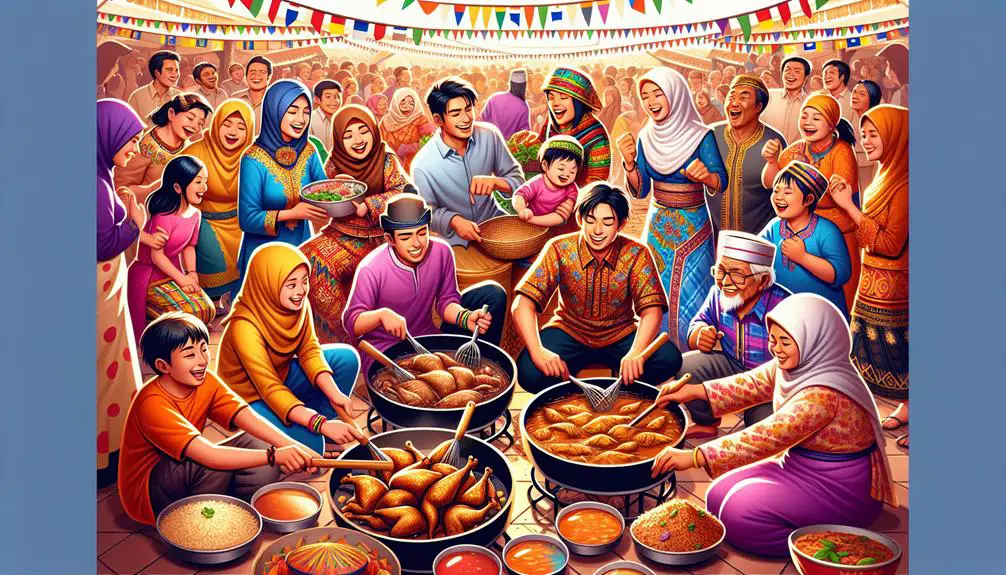
Chicken Halang-Halang is super important in our festivals. It shows how we all come together and feel cozy during special events in different places. It’s not just food, it’s like a symbol of our strong community spirit.
At weddings, it’s a big deal because it’s so yummy and it brings everyone together.
In different areas, Chicken Halang-Halang can be different. Some places make it with coconut milk for parties, and in serious events, they make it less spicy for comfort.
Like in the Sinulog festival, it’s a big part of celebrating our culture, with its flavors showing how colorful and lively our traditions are. It’s a tasty reminder of our shared experiences and traditions.
Evolution of Chicken Halang-Halang
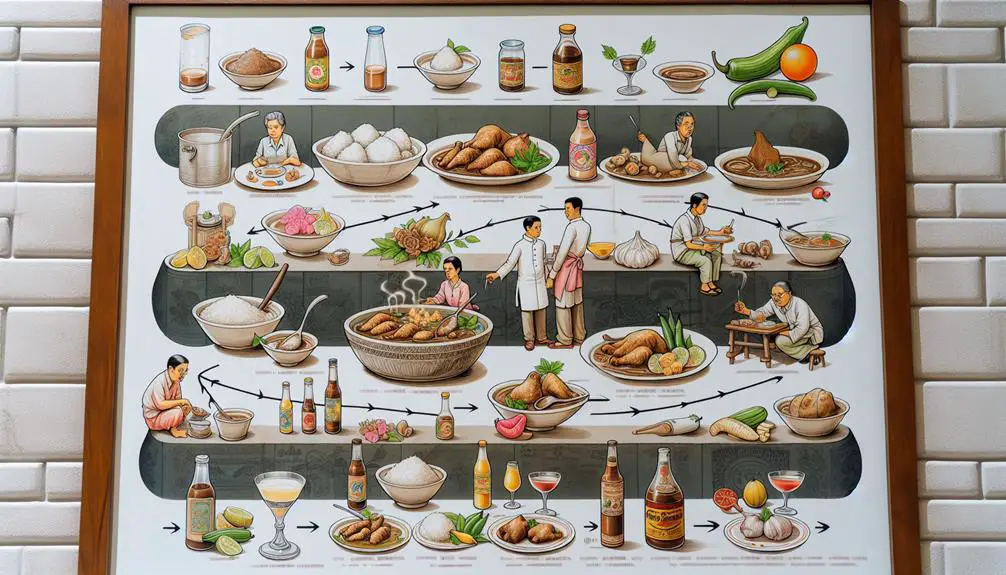
Chicken Halang-Halang has changed a lot over time. It used to be a simple stew with yummy and spicy flavors. But now, it’s different and more exciting. If you love Filipino food, you might’ve seen these changes.
The old recipe had chicken, coconut milk, lemongrass, garlic, onion, and chili. It was a cozy dish for rainy days. You could smell it cooking in a Filipino kitchen and it made you hungry.
Nowadays, chefs are making new versions of Chicken Halang-Halang. They’re using different ingredients and making it in new ways. You might see it with pasta, in tacos, or even on a spicy pizza! People at home are also trying out new things with the recipe.
Notable Recipes
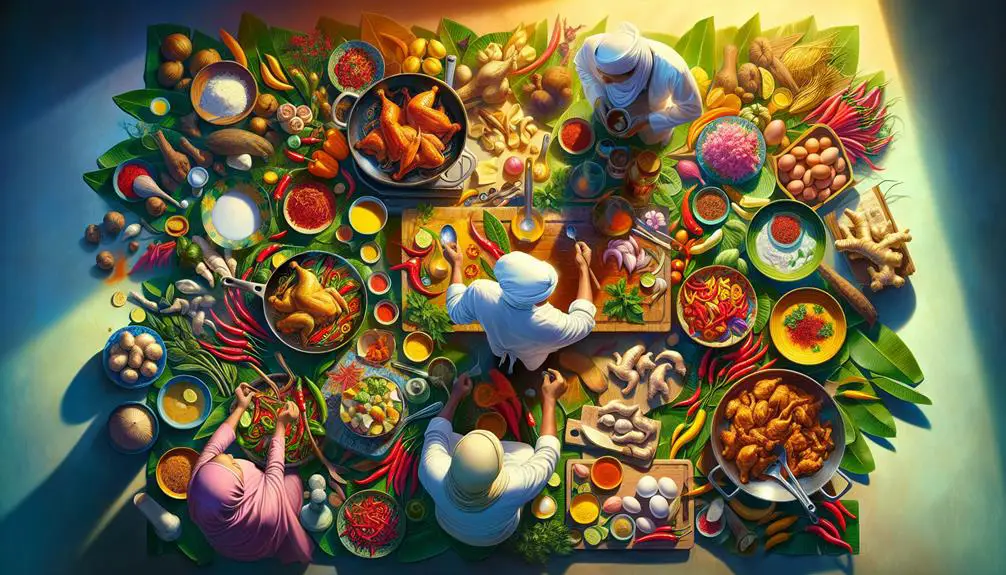
Hey there! Let’s talk about Chicken Halang-Halang and how it’s made in different Filipino places. If you want to cook it at home, you’ll need these things:
- 2.2 pounds of chicken, cut into pieces
- 2 cups of coconut milk
- 1 tablespoon of vegetable oil
- 4 cloves of garlic, minced
- 1 onion, sliced
- 2 thumb-sized pieces of ginger, cut into thin strips
- 2 green chili peppers, sliced
- 2 red chili peppers, chopped (use less if you don’t like it too spicy)
- Salt and pepper
First, heat the oil in a big pot. Cook the garlic, onion, and ginger until they smell nice. Then add the chicken and cook until it turns a bit brown. Pour in the coconut milk, let it boil, then simmer. Add the chili peppers, and add some salt and pepper. Keep cooking until the chicken is soft and the sauce gets thicker. Serve it hot with rice.
In Visayas, they might put lemongrass to make it smell like citrus. In Mindanao, they add turmeric to make it yellow and have a special taste.
Some fancy chefs might use special chicken and different types of peppers. They might serve it in a fancy way with foam and chili oil on top of the chicken. It’s a mix of old and new styles.
Every version of Chicken Halang-Halang has a story to tell about the people and the food in the Philippines. Whether you like the normal way or want to try something new, you get to taste a little bit of the cool Filipino food.
Global Recognition and Influence
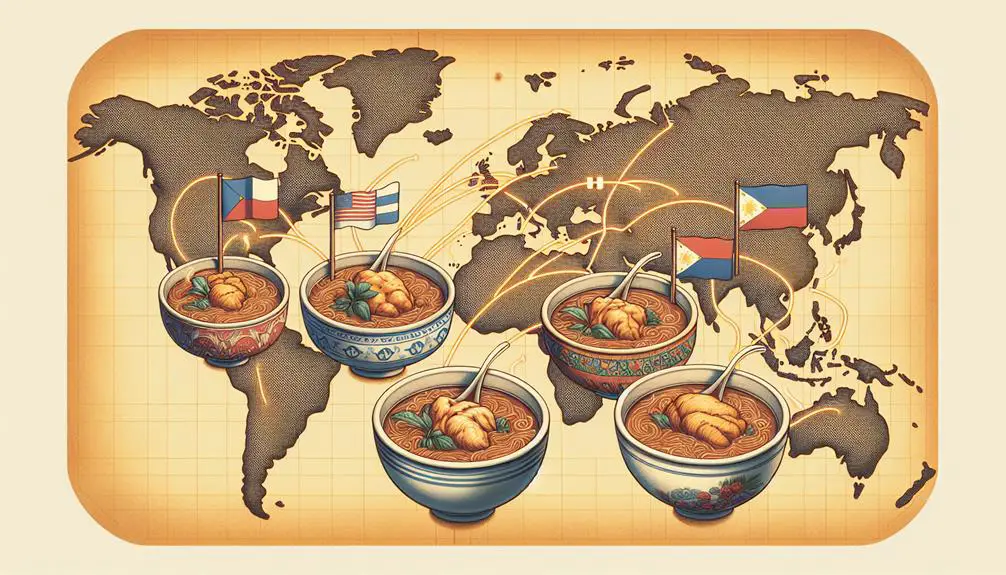
As Chicken Halang-Halang becomes famous in other countries, chefs all over the world are adding it to their menus.
They’re making it their own by adding flavors from their own country. You can find this dish in cool restaurants in big cities like Los Angeles and London.
They don’t just make it spicy, they mix different flavors together too.
In these fancy restaurants, they might change the dish a bit by using special chicken or adding new spices.
Sometimes you can find a Chicken Halang-Halang taco at a food truck or a fancy restaurant. They might even serve it with special foam and rice.
It’s not just in sit-down restaurants – you can find this dish in street food too. People are waiting in line to try it with a special dip that has local flavors.
This dish can be used in different ways. You can put it in a salad or a sandwich to make it taste different. It’s popular all over the world, and you might find it in different countries, with a new twist each time.
Wrapping Up
Chicken Halang-Halang is more than just a meal. It’s super important to Filipino culture and has a long history.
You can make it in your kitchen and add your own flavors. Whether you cook it the old-fashioned way or try new things, this dish is super tasty.
So cook it, share it, and enjoy!
